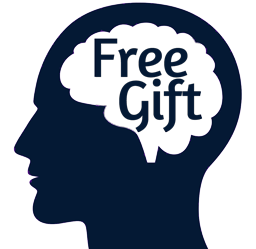Excerpt from Transcript of BS 189 with Antonio Damasio
This is from the closing episode summary:
The main idea of Feeling & Knowing by Antonio Damasio is that consciousness is embodied. This means that even though the brain is essential to consciousness or subjective experience, it cannot generate consciousness on its own. You are not a brain in a bat.
This is a topic we've actually explored often in the past, but Damasio is definitely one of the pioneers of this viewpoint. Unfortunately, Damasio also uses different terminology than many other writers in the field. Last month, Anil Seth gave us a very simple definition of consciousness: subjective experience.
This is a working definition that seems to have emerged with some consensus among current workers in the field. While Damasio’s definition is consistent with this approach, he makes a distinction between consciousness and what he calls Mind. He says mind is an ongoing collection of images based on neuronal maps. Mind requires a nervous system. Consciousness is Mind plus images from the body. Those are the interoceptive feelings coming from the body.
Now, based on how ancient and entrenched interoception appears to be, I'm not sure that there's a good example of an animal that clearly has a mind, but is not conscious.
I also want to review Damasio’s use of terms, “emotions” and “feelings.” He says that feelings are the component of the Mind generated by the interaction of the body and the nervous system. Examples range from hunger and thirst, all the way to wellbeing and desire. In contrast, he says emotions are actions in the world that betray your state. The example he gives is the difference in behavior between a person who is joyful and one that is depressed. I'm going to skip reviewing his definitions of affect and valence because they don't really have much of a role in his account.
The problem is that researchers and writers seem to use the terms, emotions and feelings in different often inconsistent ways. Some use the terms more or less interchangeably, which adds even more to the confusion.
In The Neuroscience of Emotion, which I reviewed back in episode 151, Adolphs and Anderson distinguished between emotions as internal functional states and the conscious experience of emotions, which is what they called feelings. They also argued that emotions cause behavior, not the other way around as implied by Damasio’s definition.
In How Emotions Are Made, Lisa Feldman Barrett described an affect as a general sense of feeling that is present at birth and depends on interoception. She also called interoception the origin of feelings, but she did not explicitly distinguish between the terms, feelings and emotions.
Most writers seem to take emotions as something that become feelings when they are consciously experienced. But rather than getting bogged down in terminology, I think it's important to acknowledge the importance of Damasio’s key idea, which is that consciousness is an embodied process. This is the essence of the subjectivity of consciousness that is at the heart of the so-called hard problem. Damasio also emphasized that consciousness is rooted in life. That leads us back to Anil Seth, and even further back to Evan Thompson's book, Mind in Life.
Damasio’s unique contribution to the story of consciousness is his insistence that interoception, that is signals from the body than signals from the outside world is the fundamental component of consciousness. This has important implications for things like artificial intelligence. As many recent guests have pointed out, intelligence does not equal consciousness. Damasio gave us the example of bacteria, which demonstrate intelligent behavior, but they are not conscious. If interoception is the key to consciousness, AI or artificial intelligence, as it currently exists, is not going to spontaneously become conscious.
On a more practical level, the importance of embodiment to consciousness emphasizes its connection to life and warns us not to put our hopes into uploading our brains to the cloud!
Click here to buy the complete episode transcript.
You can also get episode transcripts via our Premium subscription, which gives you access to the complete back catalogue (over 100 episodes going back to 2006) with audio and written transcripts. New episodes transcripts are also available to current Patreon supporters who pledge at least $3 per month.



















